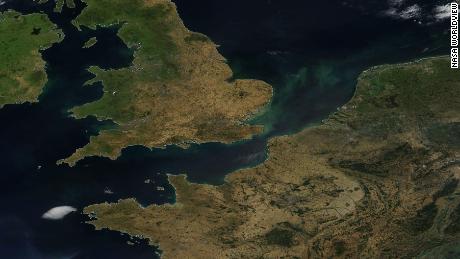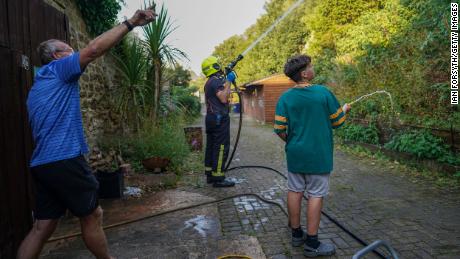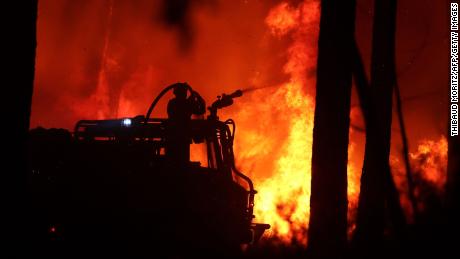Counties across the UK, including some as far north as those in the traditionally wetter Scotland, have experienced worsening drought conditions in recent weeks, but England has been the worst affected.
The National Drought Group convened Friday and announced that England’s south, southwest and southeast were in drought, along with central and eastern regions.
The group made the announcement amid the country’s fourth heat wave since June and following the driest July for England since 1935. Southern England received just 17% of its average rainfall in July, according to the UK Met office. The UK has experienced below average rainfall nearly every month since the start of 2021.
The drought declaration means water companies and governments can implement drought plans without seeking permission from ministers. Companies are almost certainly likely to impose more hosepipe bans, which are already in place for millions of people, forcing them to water gardens and wash cars without hoses, and refrain from filling up paddling pools in the ongoing heat wave.
Companies could also take more water out of rivers and other sources to ensure supplies.
The announcement Friday puts the declared area under an amber drought alert, meaning several indicators — including rainfall, river levels and flows, reservoir storage and groundwater levels — are very low.
Concerns grow over food security
Parts of the UK do typically experience drought conditions every five to 10 years. Some experts are, however, comparing this one to the early stage of a severe drought in 1975-76, which was also triggered by a combination of extreme heat and consecutive months of low rainfall.
The badly affected south of England has had no rain at all in August, and the Centre for Ecology and Hydrology has said that drought conditions could continue until at least October. The agency only looks a few months ahead, and climate scientists have warned that if this coming winter is also dry, like last winter, the UK’s food security could be at risk.
While the lack of rain and heat are the drivers of the drought, around 3.1 billion liters of water are lost every day in England and Wales through leaks in the nations’ aging infrastructure. Consumer groups and experts have called on water companies to do more to plug leaks.
Liz Bentley, CEO of the Royal Meteorological Society, said that there were real concerns about the impact of the drought on food security.
“There’s a number of crops that are really struggling due to either lack of rainfall, like the potato crop here relies on rainfall, they don’t usually take water from anywhere else to irrigate the fields. And even some of the other crops that do take water from from rivers, for example, to irrigate fields, they’re really struggling at the moment,” Bentley told CNN.
“Even in current conditions, yields are going to be down for a number of crops and the price of these things are going to go up, and obviously that’s due to drought here in the UK. But there’s other things going on across Europe.”
Around 63% of the land across the European Union and UK is under drought warnings or alerts issued by the European Drought Monitor, meaning there is inadequate moisture in the soil. That’s an area almost the size of India, or the three biggest US states of Alaska, Texas and California combined. On 17% of land, drought conditions are more severe, meaning vegetation is stressed.
Experts are warning that drought could continue into the autumn, or even winter, which is when the nation typically gets most of its rain to store for drier parts of the year. Another dry winter would put even more stress on food security.
“It’s going to continue into the autumn and then really, we don’t know beyond that. It depends on whether we see any significant rainfall — good steady rainfall that replenishes water levels,” Bentley said. “What we don’t want at the moment are heavy, thundery downpours, because the ground is so dry that water just runs off. It doesn’t soak into the ground.”










More News
Paramount Chief Executive Bob Bakish Could Be Out Next Week
Paramedic Avoids Prison in Death of Elijah McClain
For Fox News and Conservative Media, Student Protests Are a Familiar Target